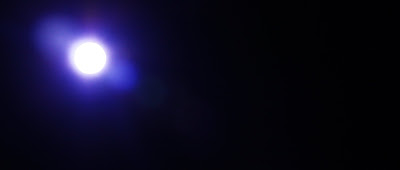The dark face, but bright outside, created difficulty and frustration. If we exposed for the characters face the outside light would be blown out, but if we exposed for the outside light the characters face was dark. Our best option was to try and raise the characters face enough to get us proper exposure while the camera was properly exposed for the outside light.
 Making due
Making dueThis was easier said then done. We only had small tungsten production lights on set , and no flex fills or HMIs. We had some small poster boards whiched helped bounce a little light when used as bounce cards, but weren't strong enough alone. When using the tungsten lights we found that they had to be as close to the character as possible and could not be balanced to daylight with gels due to the loss of light. This combination brought the face of the actor up the few stops we really needed. We were able to get a better looking image, but still not optimal.
In some situations you just have to make due with the equipment you have.
Signed,
-)_-.












